Photos
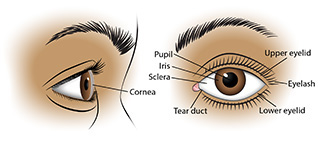
Eye Anatomy
Source: Self Care Decisions, LLC
Self Care Decisions, LLC 2023-2025
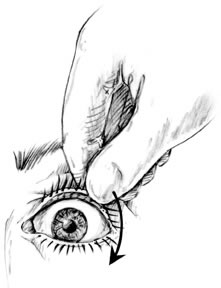
FIRST AID Advice - Foreign Object Under Upper Lid
- If particle cannot be seen, it's probably under the upper lid, the most common hiding place.
- Try to open and close the eye several times while it is submerged in a pan or bowl of water.
- If this fails, pull the upper lid out and draw it over the lower lid. This action, and your tears, will sometimes dislodge the particle.
Source: Self Care Decisions, LLC
Used with Permission from Schmitt Pediatric Guidelines LLC.
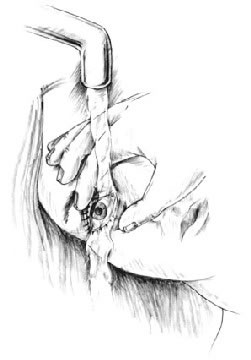
FIRST AID Advice - Many Particles (such as dirt or sand) in Eye
- Clean around the eye with a wet washcloth first.
- Place the face under a gently running faucet or a shower. Hold the eyelid open while you do this.
- Or, try to open and close the eye repeatedly while holding that side of the face under water in a pan or bowl (of water).
Source: Self Care Decisions, LLC
Used with Permission from Schmitt Pediatric Guidelines LLC.
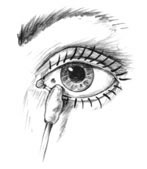
FIRST AID Advice - a Foreign Object in a Corner of the Eye
- Try to get the particle out with a moistened cotton swab or the corner of a moistened cloth.
- If this does not work, then place the face under a gently running faucet or a shower. Hold the eyelids open while you do this. This should flush the particle out.
Source: Self Care Decisions, LLC
Used with Permission from Schmitt Pediatric Guidelines LLC.
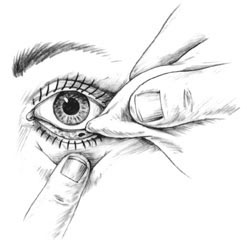
FIRST AID Advice - a Foreign Object Under the Lower Eyelid
- Pull the lower eyelid out by gently pulling down the skin above the cheekbone.
- Touch the particle with a moistened cotton swab.
- If that does not work, try pouring water on the speck while pulling the lower eyelid out.
Source: Self Care Decisions, LLC
Used with Permission from Schmitt Pediatric Guidelines LLC.